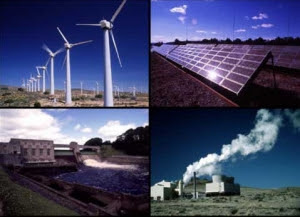The news that international leaders in Italy were not able to commit to strong, binding climate change agreements probably doesn't surprise anybody. "It is no small task for 17 leaders to bridge their differences on an issue like climate change," said president Obama. But tackling an issue of this urgency, complexity, and enormity may have an upside.
Right now, leaders of so-called 'developed' and 'developing' countries are at a standoff with good reason: developed countries have polluted more in the past, but developing countries are rapidly outpacing us. Countries like the US have much higher emissions per capita, while poorer nations argue they're simply trying to provide basic services for their people. "Developed countries like my own have a historic responsibility to take the lead," Obama said. But without the help of developing nations like China and India, our best efforts will not stop global warming.
Clearly, this impasse will not be resolved using the current paradigm of 'developed' and 'developing' nations. Leaders of the so-called 'First World' and 'Third World' are confronting the reality that we live on one world; that the atmosphere has no borders, and that the old ways of exploiting, outsourcing, offshoring etc. won't work in this crisis. When I hear these leaders argue, I wonder if climate change might not be the issue that ultimately resolves this artificial distinction between developed and developing nations. Could this crisis be a spur to creating whole-world institutions and global solutions? After all, it's happened before.
World War II was also a global crisis that required nations to overcome artificial boundaries and reshape social institutions. A desperate need for soldiers forced us to address racism, and integrate the military. A desperate need for labor forced us to address sexism, and let women work in factories. Both of these changes paved the way for civil rights and women's liberation. Back then we needed new technologies, and we needed to produce them rapidly and deploy them all over the world. Today, the same is true. But there are differences as well.
Fighting a war against other humans was a challenge everybody understood and agreed upon. Fighting a war to re-establish harmony with Mother Nature is an oxymoron; clearly, this is a very different type of struggle. And while alliances were developed in the course of fighting WWII, stronger international agreements and institutions were not developed until after the shooting stopped. This time, we need international agreements before the shooting starts. If climate change disrupts crop production, hundreds of millions of starving refugees will come knocking at our doors, creating worldwide political chaos of tragic proportion.
Developing nations don't trust us, because of years of exploitation and entanglement - politically, economically, and socially. But the power-plants dismantled in Germany have been rebuilt in China and are now polluting the Yangtze river instead of the Rhine. Meanwhile, the wind turbines and solar panels that dirty power is creating are being sold to the West, because they're too expensive for the Chinese to buy themselves. Estimates are that up to 20% of CA's air pollution is blowing across the Pacific from China; and the ocean is rising on all continents regardless of political boundaries or economics. In essence, climate change is the reality that puts the lie to our illusions of separateness.
Just as we saw with the economic crisis, environmental crises are not strictly national problems - they affect us all. After the 1973 Oil Crisis, the US created the Library Group, which became the G-6, then G7, then G8. On the financial side, we had the G20, the G22 and now the G33. While it's not surprising that these leaders don't all agree, it's encouraging that they're meeting at all, because this irreversible trend toward getting everybody to the table is a necessary first step to true global agreement.
Creating global carbon markets; developing cheap, reliable solar energy; implementing best practices on energy efficiency; improving battery technology; promoting sustainable agriculture and effective water reuse strategies - none of these will be easy. But we've always been good at responding to a crisis. The true test of 'development' this time will be to see if we can get out in front of it.
History may look back on these fledgling climate change agreements as the first step in dissolving a paradigm that pits developed and developing countries against each other; as the end of the 'Third World' and the idea that we can ignore other people's problems. When I hear that international leaders for the first time in history have signed agreements regarding the world's temperature, I know we are entering a new era of global opportunity.
The crisis of climate change presents us with three critical opportunities: a moral opportunity to change what's negative about our systems, and help those in need; an economic opportunity to invest in the winning technologies of the future; and a political opportunity to form new international commitments that will strengthen all nations.
Now, if we could just agree on that, we might be getting somewhere!



